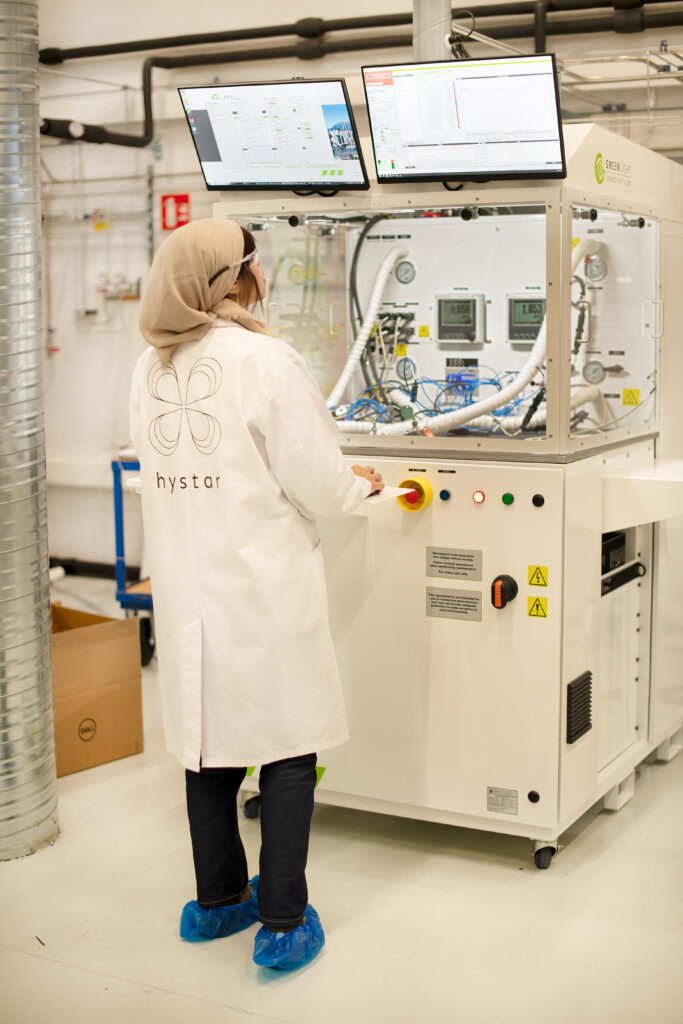
Building on this strong foundation, and while already cost-competitive, reducing the cost of PEM electrolysers without compromising long-term performance and efficiency remains a key priority for Hystar. In pursuit of this objective, Hystar is working closely with key industrial and research partners across Europe through several strategic research initiatives, e.g. Hystack II, UNICORN, IRIS, MODELYS and FME Hydrogeni. These projects are complementary in scope and collectively aim to accelerate innovation in critical components such as membrane, catalyst, coating, and bipolar plate.
As the OEM partner in these projects, Hystar plays a pivotal role in component validation. Hystar leverages its advanced Innovation Centre, which is equipped with a suite of testing platforms designed to evaluate components across multiple scales:
Several 1.3 kW test stations are dedicated to single-cell testing, allowing for precise screening and electrochemical characterization of individual components under controlled conditions.


10 kW test stations enable small area, short-stack testing of up to 10 cells, bridging the gap between single cell performance and stack level integration.
Up to 50 kW test station is used for evaluating short commercial stacks, providing insights into high current performance and durability, using advanced equipment in-line EIS and gas quality measurements.

Each material and component undergoes rigorous and multi-stage testing at these different levels. This includes performance benchmarking, long-term stress testing, and degradation analysis to ensure reliability and compatibility with commercial requirements. Only after passing these comprehensive evaluations are components considered for integration into Hystar’s commercial stack platform.
Through these intense research collaborations and activities, Hystar is targeting to reduce the cost of its PEM electrolyser stack by more than 45% by the end of 2026, compared to 2023. This goal reflects our commitment to continuously improve the cost of PEM technology and support the broader scale-up of green hydrogen as a competitive and sustainable solution.